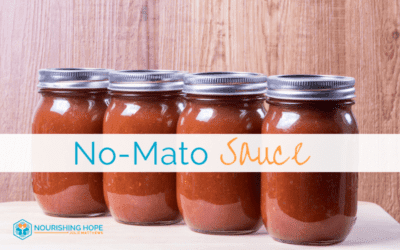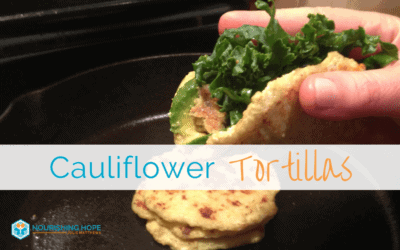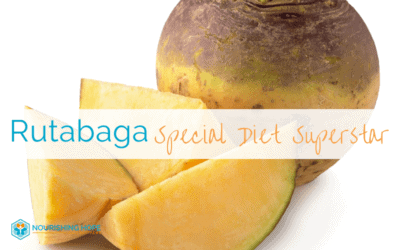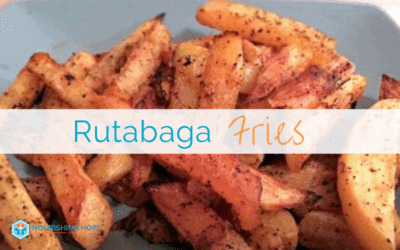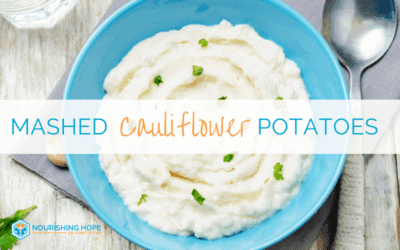Low Salicylate, Low Amine, Low Glutamate Diets
Salicylates are natural substances created by plants, a type of phenol, used as a defense mechanism against organisms eating the plant. These natural food compounds can also negatively affect humans. Phenols are not all bad, but they can be problematic for those that can’t process them well. Phenols, including salicylates, must be broken down by a biochemical process called sulfation, which is low in ADHD, autism, and for many children and adults. When they cannot be broken down properly, they can cause significant symptoms in children and adults.
Common salicylates symptoms include:
- Hyperactivity
- Red cheeks and/or red ears
- Behavioral challenges
- Irritability
- Aggression
- Sleeping issues
- Crying
- Moodiness
- Anxiety
- Tics/Tourette’s syndrome
Foods containing salicylates include apples, grapes, berries, almonds, tomato sauce, honey, herbs, and spices.
Even worse: phenols are often artificially added to foods – artificial coloring, artificial flavoring, and artificial preservatives such as BHA, BHT, TBHQ are all phenols that many children struggle to metabolize adequately. For decades, doctors and researchers (and many parents) have known these artificial additives create behavioral (as well as physiological) problems in children. So all artificial ingredients are removed on a low salicylate diet too.
You can read more about how salicylates are the number one cause of behavioral challenges in children I see in my nutrition practice in my article: Could berries, apples, and grapes be causing your child’s behavior challenges?
Amines
Amines are found in foods that involve fermentation or protein breakdown (sauerkraut and bone broth), and can be found in both fresh produce (bananas, avocados, and tomatoes) and processed foods (cheese, chocolate, fish products, and yeast extracts).
Amines can be phenols or non-phenolic, and there are often more than one type of amine in a high amine food (such as tyramine and histamine).
Histamines are the most well known type of amines, as everyone knows someone who suffers from hayfever and takes an antihistamine. But your child can also consume histamines in their food, leading to long term inflammation, skin irritation, diarrhea, and headaches.
Amines can cause any of the physical and behavioral symptoms of salicylates above, as well as:
- Migraines
- Dizziness
- Nausea
- Acid reflux
- Irritated or itchy skin
- Trouble falling asleep
- Facial flushing
- Gastrointestinal cramps.
Glutamate
Glutamate is an excitatory neurotransmitter that causes a feeling of excitability, as well as anxiety, aggression, and other stimulatory sensations – and can be found in food.
Glutamate is not only found in MSG-type additives such as monosodium glutamate and autolyzed yeast extract, but also in foods naturally high in free glutamate, such as soy sauce, parmesan cheese, and marmite. Glutamate is often found in similar foods as amine foods such as sauerkrauts and bone broths.
Your child is unique and so are their diet and nutritional needs. Learn how personalized nutrition can help your child today. Download our guide: “12 Nutrition Steps to Better Health, Learning, and Behavior.”
Below you can explore Nourishing Hope recipes that are low salicylate, as well as those that are a combination of low salicylate, amine, and glutamate. There are a number of versions of diets that are low in salicylate, amine, and glutamate such as the Failsafe and RPAH Diet. The Low Salicylate, Amine, and Glutamate Diet presented here in the recipes is the Low SAG DietTM based on the work and clinical experience of Julie Matthews. Be sure to read all of the instructions before beginning in case diet-compliant substitutions are described in the introduction. Be sure to read all of the instructions before beginning in case diet-compliant substitutions are described in the introduction.
Low Salicylate Recipes
No-Mato (Tomato-Free) Sauce
Ingredients 5-6 carrots, chopped 1 red/purple beet, peeled and chopped 1 small or 1/2 large onion, peeled and chopped 2 celery stalks, chopped 1 ½ cups water Directions Place all chopped and prepared vegetables and water into a pot. Once water boils, reduce heat,...
Low Carb Cauliflower Tortillas
Avoid pepper for LOD and FG. Ingredients 1 head of cauliflower 3 eggs ½ teaspoon salt Black pepper (optional) Directions Preheat oven to 375 degrees. Wash cauliflower, cut cauliflower chunks off base stem/leaves. Put cauliflower in food processor and process until a...
Rutabagas – The Hidden Gem for Most Special Diets
The Rutabaga, also known as a swede, Swedish turnip (though distinctly different than a turnip), and neep (in Scotland). Rutabagas are root vegetables and a member of the cruciferous or brassica family, which includes broccoli, cauliflower, cabbage, Brussels sprouts,...
Rutabaga Fries
This is a great recipe because it’s compatible with so many diets. To make it low salicylate or SAG, use ghee or sunflower oil. For 100% dairy-free, avoid ghee. For keto, eat sparingly. Ingredients 3-4 Rutabagas Ghee or expeller-pressed coconut oil Salt Directions...
Chicken Nuggets
Egg-Free Chicken Nuggets GFCFSF/Low Oxalate/Low Salicylate, Egg-Free, and Nut-Free Use white vinegar for low salicylate. Ingredients 2 Chicken breasts or thighs 2/3 cup GF flour (I use 2/3 brown rice flour and 1/3 potato starch or tapioca starch or a combo of...
Thanksgiving Turkey
The turkey is usually the star of your Thanksgiving show! Many traditional recipes can be converted for food allergies or intolerances. Here is an easy guide for a perfect bird! Let's start by discussing how much turkey you will need to buy and how to safely...
Summer Grilling: Kid-Friendly Vegetables on the BBQ
Most dads love a good barbeque. If you’re a dad planning a barbeque, or a mom creating a fun day for the dad in your family’s life, I’ve got some ideas for you! When you think of BBQ, I’m sure most of you are thinking of meat. But vegetables can be delicious on the...
Less-Sugar Cooked Buttercream Frosting Recipe
How time flies! 9 years ago, my daughter Ruby was born. Today, she’s baking her own birthday cakes. She loves cooking shows like Masterchef Junior and has been inspired to do her own cooking and baking. After watching the show, I realized how capable children can be...
Could Your Christmas Tree Be Causing Holiday Meltdowns?
I have nothing against Christmas trees or holiday wreaths, but for children with sensitivities, these festive additions might cause unexpected problems. Before you run out and buy a fresh, new Christmas tree or holiday wreath, you’ll want to read my client’s...
Mashed Cauliflower Potatoes
GFCF/SCD/GAPS/Paleo/LOD/FG This recipe is SCD compliant. For those on GFCF and not SCD, you can use half potatoes—this way you have mashed potatoes with hidden cauliflower. For low oxalate, use coconut milk. For nut-free,...
Low Salicylate, Amine, and Glutamate Recipes
No-Mato (Tomato-Free) Sauce
Ingredients 5-6 carrots, chopped 1 red/purple beet, peeled and chopped 1 small or 1/2 large onion, peeled and chopped 2 celery stalks, chopped 1 ½ cups water Directions Place all chopped and prepared vegetables and water into a pot. Once water boils, reduce heat,...
Low Carb Cauliflower Tortillas
Avoid pepper for LOD and FG. Ingredients 1 head of cauliflower 3 eggs ½ teaspoon salt Black pepper (optional) Directions Preheat oven to 375 degrees. Wash cauliflower, cut cauliflower chunks off base stem/leaves. Put cauliflower in food processor and process until a...
Rutabagas – The Hidden Gem for Most Special Diets
The Rutabaga, also known as a swede, Swedish turnip (though distinctly different than a turnip), and neep (in Scotland). Rutabagas are root vegetables and a member of the cruciferous or brassica family, which includes broccoli, cauliflower, cabbage, Brussels sprouts,...
Rutabaga Fries
This is a great recipe because it’s compatible with so many diets. To make it low salicylate or SAG, use ghee or sunflower oil. For 100% dairy-free, avoid ghee. For keto, eat sparingly. Ingredients 3-4 Rutabagas Ghee or expeller-pressed coconut oil Salt Directions...
Chicken Nuggets
Egg-Free Chicken Nuggets GFCFSF/Low Oxalate/Low Salicylate, Egg-Free, and Nut-Free Use white vinegar for low salicylate. Ingredients 2 Chicken breasts or thighs 2/3 cup GF flour (I use 2/3 brown rice flour and 1/3 potato starch or tapioca starch or a combo of...
Thanksgiving Turkey
The turkey is usually the star of your Thanksgiving show! Many traditional recipes can be converted for food allergies or intolerances. Here is an easy guide for a perfect bird! Let's start by discussing how much turkey you will need to buy and how to safely...
Summer Grilling: Kid-Friendly Vegetables on the BBQ
Most dads love a good barbeque. If you’re a dad planning a barbeque, or a mom creating a fun day for the dad in your family’s life, I’ve got some ideas for you! When you think of BBQ, I’m sure most of you are thinking of meat. But vegetables can be delicious on the...
Less-Sugar Cooked Buttercream Frosting Recipe
How time flies! 9 years ago, my daughter Ruby was born. Today, she’s baking her own birthday cakes. She loves cooking shows like Masterchef Junior and has been inspired to do her own cooking and baking. After watching the show, I realized how capable children can be...
Could Your Christmas Tree Be Causing Holiday Meltdowns?
I have nothing against Christmas trees or holiday wreaths, but for children with sensitivities, these festive additions might cause unexpected problems. Before you run out and buy a fresh, new Christmas tree or holiday wreath, you’ll want to read my client’s...
Mashed Cauliflower Potatoes
GFCF/SCD/GAPS/Paleo/LOD/FG This recipe is SCD compliant. For those on GFCF and not SCD, you can use half potatoes—this way you have mashed potatoes with hidden cauliflower. For low oxalate, use coconut milk. For nut-free,...


